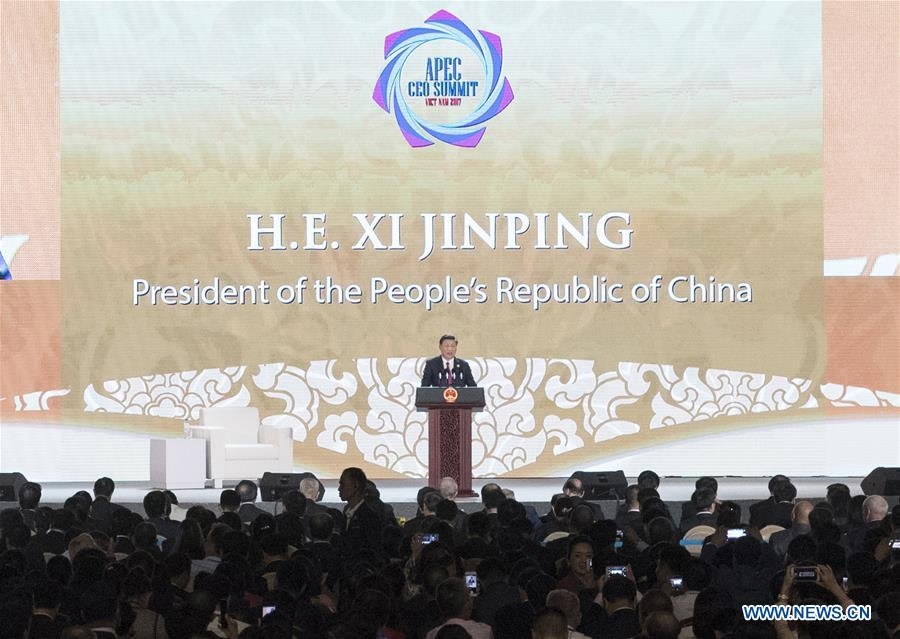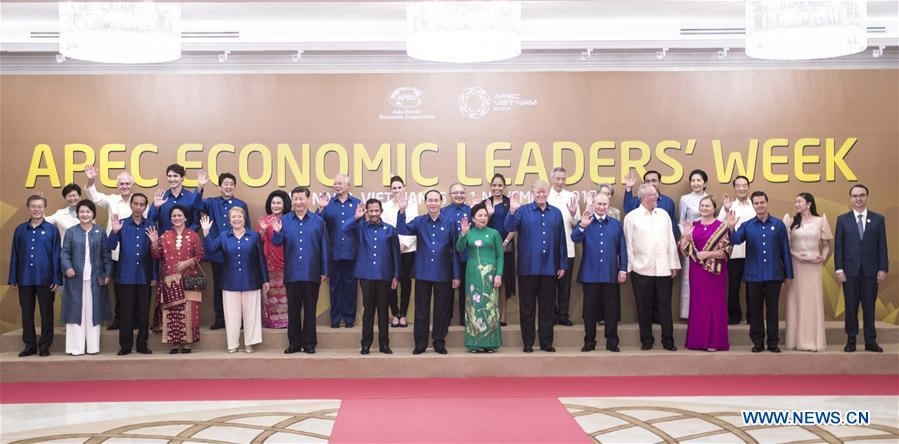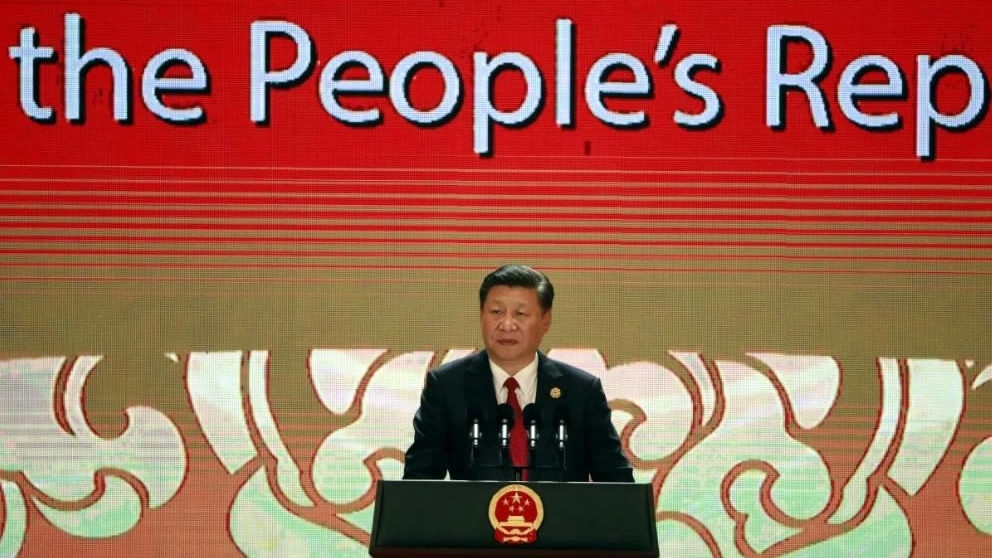The difference in the APEC speeches on Friday in the Vietnamese port city of Da Nang respectively by President Xi and President Trump can be succinctly summarized as the battle of multilateralism versus bilateralism.
Trump railed against the World Trade Organization, which sets global trade laws, complained about US trade imbalances and attacked free trade by saying it costs millions of American jobs. More importantly, he said America would make bilateral agreements with “any Indo-Pacific partner here who abides by fair reciprocal trade,” but only “on a basis of mutual respect and mutual benefit.” Setting aside the notion of “Indo-Pacific” which appears to be new in America’s Asian foreign policy, sadly, the days of America leading global free trade is gone, for good.

Chinese President Xi Jinping delivers a keynote speech at the Asia-Pacific Economic Cooperation (APEC) CEO Summit in Da Nang, Vietnam, Nov. 10, 2017. /Xinhua Photo
Chinese President Xi Jinping delivers a keynote speech at the Asia-Pacific Economic Cooperation (APEC) CEO Summit in Da Nang, Vietnam, Nov. 10, 2017. /Xinhua Photo
Minutes later, President Xi took to the podium to espouse free trade. In sharp contrast to President Trump, he defended multilateral trade in saying, “We should support the multilateral trading regime and practice open regionalism to allow developing members to benefit more from international trade and investment.” Our president has now become the poster child for free trade and globalization on the international stage.
President Trump certainly backs up his words with actions. Not only has he already scrapped the TPP trade pact, he is also starting to tear apart NAFTA, with the Canadian softwood lumber industry to be the first victim. On April 25, 2017 the Trump administration announced plans to impose duties of up to 24% on most Canadian lumber, charging that lumber companies are subsidized by the government.

US President Donald Trump speaks on the final day of the APEC CEO Summit on the sidelines of the APEC Economic Leaders' Meeting in Da Nang, Vietnam, Nov. 10, 2017. /AP Photo
US President Donald Trump speaks on the final day of the APEC CEO Summit on the sidelines of the APEC Economic Leaders' Meeting in Da Nang, Vietnam, Nov. 10, 2017. /AP Photo
Why multilateralism triumphs over bilateralism in the majority of economist community? There are at least three reasons I can think of.
First, the rules-based principle in regulating international flows of goods, services and capital works more effectively under a multilateral system. A rules-based governance system by definition means it has to engage multiple parties, which provides one seat and often times one vote for each party. The alternative bilateralism on the other hand is often inefficient, easily inequitable or discriminatory, and prone to being subject to hijacking by power politics. Bilateralism creates a hub-and-spoke system in political science jargon, and the hub usually dictates the rule. Canada appears to be the first victim so far.
Second, trade or capital flows are fundamentally two-way streets, where both parties involved derive benefits. Take China’s Belt and Road Initiative as an example, which some commentators claim is China’s international aid program in comparison to the Marshall Plan (which this author is vehemently opposed to, but this is a topic of discourse for another day), China could also benefit immensely from such infrastructure investments in terms of expanding exports opportunities and securing and lowering costs of imports of strategic raw materials.
Third, and here is the economics insight that may not seem intuitive and probably hard for Trump and his team of advisors to grasp. A balanced network of trade and investment relationships in a general equilibrium is fundamentally more welfare enhancing than a set of balanced bilateral relationships in a set of partial equilibria. That means the former provides more trade and more gains from trade. Think of the time when humans started to use the currency media for exchange. Before that, a person had to maintain a trade balance with everyone he trades with. But the use of the currency allows him to trade more and realize more gains from trade.

Chinese President Xi Jinping (6th L, front) poses for a family photo before a gala dinner hosted by Vietnamese President Tran Dai Quang and his wife for leaders, delegates and spouses attending the 25th Asia-Pacific Economic Cooperation (APEC) Economic Leaders' Meeting, in Da Nang, Vietnam, Nov. 10, 2017. /Xinhua Photo
Chinese President Xi Jinping (6th L, front) poses for a family photo before a gala dinner hosted by Vietnamese President Tran Dai Quang and his wife for leaders, delegates and spouses attending the 25th Asia-Pacific Economic Cooperation (APEC) Economic Leaders' Meeting, in Da Nang, Vietnam, Nov. 10, 2017. /Xinhua Photo
Multilateralism also offers the kind of stability and predictability when it comes to outside demand or supply shocks, which I call the anchoring effect, akin to the function of a ship anchor in stormy waters. This is where multinational organizations like the World Bank and the IMF step in to address dire situations of financial crisis, to reduce risks of global price spikes for important commodities and to help with humanitarian crisis if needed. The Road and Belt Initiative has set up its own international organizations like the Asian Infrastructure Development Bank under a multilateral participation framework.
America used to be a beacon of free trade, as epitomized by such powerful words from Thomas Jefferson, “Commerce with all nations, alliance with none, should be our motto.” Today the administration in Washington is treading a protectionist road that runs contrary to the global trend, squandering away all opportunities of world leadership while decimating American long term strategic interests.
(John Gong is a professor of University of International Business and Economics. The article reflects the author’s opinion, not necessarily the view of CGTN.)





